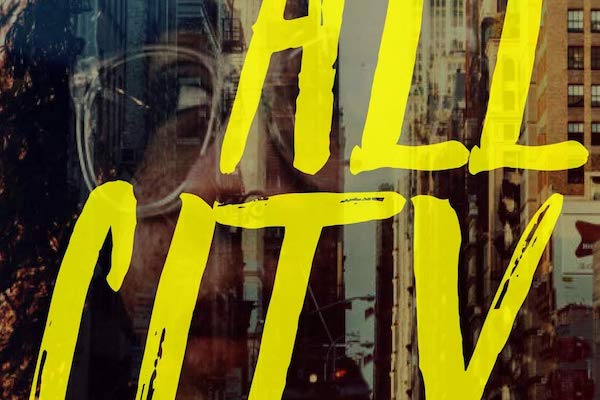‘All City’ by Alex DiFrancesco

Author: Christina Orlando
June 20, 2019
It is hard to read Alex DiFrancesco’s All City and not think of Hurricane Sandy and the destruction done to New York City during that particular catastrophe. The sentiment that “New York didn’t seem like a place that could have an end. We would all wake up to our coffee in Greek paper cups and be furious about the train delays no matter what happened” is very real, and certainly during the days leading up to Sandy, there was a distinct feeling that whatever the news was reporting was over-hyped and New York could withstand anything. Even when the evacuation warnings started, a good percentage of New Yorkers ignored it until the very last possible moment. This is all to say, the storm-wrecked metropolis of All City feels very real, and very possible.
In All City, the fictional Superstorm Bernice hits, and New York City is left completely flooded and destroyed. The book tracks several characters as they survive and strive to rebuild. The story begins with Makayla, a young Native New Yorker from, as they say, the wrong side of the tracks. Struggling with money, Makayla works at a 24/7 convenience store, sometimes for twelve hours a day. When the storm comes, she is holed up in her friend Jaden’s apartment, where they stay for longer than they have rations for. Jesse, a homeless, genderqueer street punk, lives in an abandoned IRT station with three other homeless young people, including their trans girlfriend Lux, all who struggle to care for each other in the midst of supply-raided pharmacies and overcrowded hospitals. Another character Evann, to contrast, has money and lives in a posh building with a priceless Basquiat adorning the walls.
The government-controlled shelter is unsafe and overcrowded. Jaden and Makayla, along with her grandmother and a young Latinx child they assume care of, find an abandoned luxury building and move in after the disaster has left most places unlivable and without food. Together with a few others from the shelter, they begin to build a socialist community of their own, with committees for everything from childcare to food prep to construction, as they work to remove the water damage done to the lower floors of the building.
The commune operates idyllically—for a while. With residents of all ages inhabiting this empty apartment building, each person is dedicated to doing their part and helping the system run smoothly. Makayla becomes the de facto leader, guarding the supply closet and essentially becoming Operations Manager. Somehow, news of this community spreads, and others are drawn to the promise of somewhere safe and kind to rebuild their lives. Jesse and their friends come down (walking from the Bronx to Brooklyn which is insane, but what else is there to do, really) and join the building, bringing their anarchist sentiments with them.
Somewhere in the midst of all this, a rogue Banksy-esque artist is traveling through the city, creating murals on the walls to commemorate and commentate on the tragedies that were a result of the storm. The murals become a testament to human creativity, beauty, and resilience. But the murals also draw unwanted attention.
With All City, DiFrancesco breaks the speculative fiction/social commentary divide. The novel is a very astute critique of wealth disparity. It exaggerates our current economic stratification, especially within city environments, but it isn’t really that far off from our current truth. The ultra-rich are able to escape disaster like the one depicted here, while lower income communities suffer.
The novel expertly uses language as a world building technique. Each one of these characters uses a particular dialect to indicate their culture and class: Evann’s chic infusion of French phrases contrasts against Makayla’s A Clockwork Orange-like slang (“slosh” instead of money, “jawing” instead of talking) and Jesse’s profanity-laden speech patterns. DiFrancesco is skilled at creating a world that isn’t so unlike our own, but is just different enough to create a bit of distance. These gestures make the book feel less like an unbelievably far-fetched dystopia and more like a novel written thirty years from now, that simply fell out of a wormhole onto a contemporary editor’s desk.
Be warned, there is trauma and violence in this book: rape, death, and assaults on queer and black bodies. But these moments are blips on the radar of the narrative, parts of a larger commentary on human behavior and survival. The interior lives of DiFrancesco’s characters are rich and move with momentum. The plot is laced with sly commentaries on gender, income inequality, and gentrification (the way disaster and struggle can be spun by craven opportunists into something that later hangs in a museum, removed from the context which gave it meaning). DiFrancesco illuminates this landscape with nimble prose and complex characters, which feel shockingly familiar.
All City
By Alex DiFrancesco
Seven Stories Press
Paperback, 9781609809393, 240 pp.
June 2019

